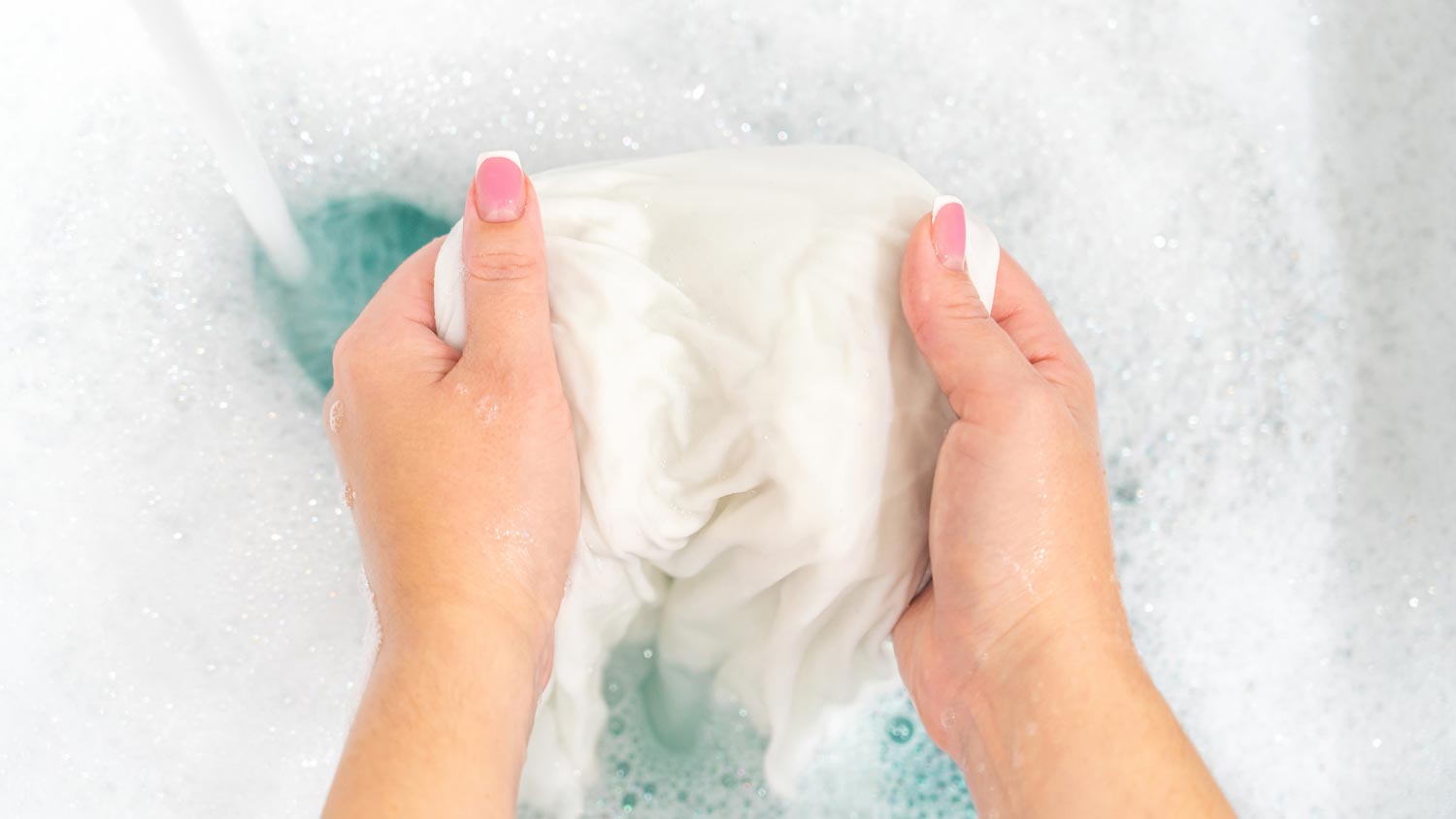
Clean walls are an important part of a well-kept house. Use this wall cleaning cost guide to see what it would cost to hire a professional to get the job done.
Bleach is a go-to household cleaner, but it has a limited shelf life


Think fast! How many bottles of bleach do you have waiting in your storage area to tackle chores like sanitizing towels and cleaning the refrigerator? Each bleach bottle has a lifespan you can’t ignore if you want maximum results. Stop wondering, “How long does bleach last?” and determine whether it’s time to toss your expired bleach.
If you store bleach correctly, it can last for one year. But bleach starts to break down after about six months after the manufacture date, even if stored in the best conditions. But don’t worry; it’s still useful for disinfecting until the one-year mark.
Bleach is 20% less effective after each year goes by, so you can’t depend on expired bleach to sanitize surfaces or clean clothes correctly. The bleach’s strength varies significantly according to storage conditions and the manufacture date, so it’s best to use it as recommended.
If your bleach is less than a year old, but you’re unsure whether it expired, follow these guidelines to find your answer and avoid bleach stains.
Bleach has a distinct odor that you likely recognize as soon as you open the bottle. If you don’t immediately smell its distinct odor after opening the cap, it's a telltale sign your bleach is closer to a saltwater mix, and you can’t use it for disinfecting and cleaning.
Another way to determine whether your bleach expired is to play detective and unscramble the manufacturer’s code on the bottle. It’s a line of numbers that signifies where it was produced and the bottled date.
Each bleach bottle is stamped with a production code that includes the date when the bottle was made, referred to as “Julain dates.” The manufacturer’s plant is the first two digits, the year it was made are the third and fourth digits, and the day of the year are the fifth and sixth digits.
For example, a bottle stamped A822 13019: 48CA3 was made in 2022 on the 130th day of the year, or May 10th. You can use this information to determine how long it’s been since the bleach was made.

Bleach has been a household cleaning product staple and a go-to water-purifying remedy for decades, but you might not know it’s a mixture of several components. Once they’ve fully broken down, they leave behind a non-toxic salt water solution.
Sodium hypochlorite: disinfects and removes stains
Sodium chloride (salt): thickens and stabilizes the solution
Sodium carbonate: cleans grease and alcohol
Sodium hydroxide: cleans oil stains
Sodium polyacrylate: repels separated dirt from clean clothes during the wash process
Depending on how much you use bleach, you might have one or several bottles in your storage area. It’s essential to store them correctly, so they’re powerful when you need them.
You should keep bleach:
Away from sunlight
At room temperature, about 70 degrees or less
Away from common contaminants like paint or oil that speed degradation
Undiluted
If you create a bleach and water solution, it's only valuable for true disinfecting for a day or two because it degrades quickly. You’ll have to mix a new batch each time.

If you’ve determined your bleach is expired, the next step is to get rid of it properly. Since bleach breaks down into salt water, it's okay to flush or wash away expired bleach. But it’s essential to dilute it before pouring it down the drain.
With the water running, slowly pour the bleach out. Let the water run for several seconds to flush the pipes. Use the toilet for small amounts of bleach—flush twice to dilute.
From average costs to expert advice, get all the answers you need to get your job done.

Clean walls are an important part of a well-kept house. Use this wall cleaning cost guide to see what it would cost to hire a professional to get the job done.

Cleaning your washing machine semi-regularly is important to your machine’s efficiency. Learn how to sanitize and disinfect a washing machine with bleach.

Fans help us stay cool during hot days but are also magnets for dust and dirt. Follow this guide and learn how to clean a fan in your home.

Mattresses can trap dust mites, sweat, and dirt. Learn how to clean a mattress to reduce allergens and extend the life of your mattress.

A dusty bedroom surely won’t help you unwind at the end of a long day. Keep dust at bay by following these tips on how to reduce dust in your bedroom.

Keep on top of the mess in one of the busiest rooms in your home with our daily, weekly, monthly, and seasonal living room cleaning checklists.